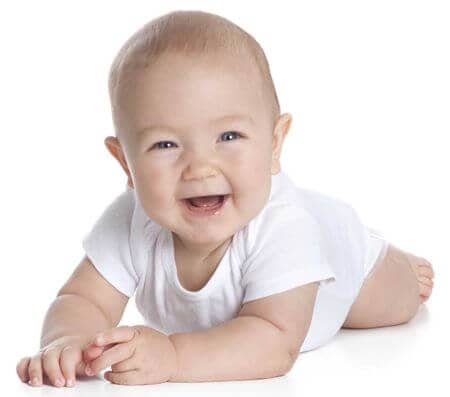Deciduous dentition also known as baby or temporary (milk) teeth are the first set of teeth erupting in childhood. Milk teeth begin their development from embryo stage and become visible in the mouth after birth, when the child is a baby. They will be lost later and be replaced by the permanent teeth, but in their absence they can remain functional for many years (rarely).

Primary dentition consists of a total of 20 teeth:
• 8 incisors
• 4 canines
• 8 molars
Teeth buds begin to form during pregnancy, in the 6th week of the embryo phase. This process starts with the front (incisors) and then the lateral (molars).
Then they continue to grow until they erupt in the oral cavity. By that time they have the same structure as the permanent teeth as the crown and root are fully formed.
Temporary teeth, just like the permanent ones do, erupt in turns at different ages, as follows:

• Central incisors at 6-12 months
• Lateral incisors at 9-16 months
• The first molars at 13-19 months
• Canines from 16 to 23 months
• Secondary molars at 22-33 months
These teeth are considered essential in the development of children's oral cavity. They are very important for maintaining space for permanent teeth eruption and for guiding them.
A normal and harmonious development of temporary teeth means a proper mastication of food and helps a lot in the correct pronunciation of words (phonation).
The maxillary and mandibular bones and the muscles attached to them heavily dependent on milk teething.
Brushing should be started since teeth appeared in the mouth, initially with only a wet toothbrush without any toothpaste.
At first, the brushing should be done by the parents. In time, the child should should acquire his own brushing movements, further assisted until the age of 6-7 years.
When the child is old enough to rinse without swallowing, he can already begin using toothpaste specifically designed for children (2-3 years). The difference between the adult toothpaste and the one for children is that the fluoride dose is lower in the children version and has a better and sweeter taste.
Even if these teeth are present in the mouth for a shorter period of time than the permanent ones, they can also have problems and symptoms similar to the ones permanent teeth have and also require treatment. They can be affected by caries, fractures, gum inflammation or tooth abscess (infection).
We need to be aware of their proximity with the permanent teeth buds, so it is preferable to choose treatment methods that do not affect in any way the forming permanent teeth underneath.
Often, treatments on baby teeth are not definitive and most of the substances used are absorbable and lose their effectiveness over time so dental abscesses may relapse after a period.
The most important thing is for the symptoms to disappear, for the masticatory function to remain unchanged and for the teeth to stay in the oral cavity until the eruption age of the following teeth to maintain their space, even if sometimes they are not aesthetically pleasing (broken, discolored, etc.).
Around the age of 6 the development of permanent teeth within the bone causes root resorption to temporary teeth until they start to become more and more mobile and finally they are exfoliated and replaced one by one by similar definitive teeth.

During this period the child has mixed dentition (temporary and permanent teeth are present in the mouth). This stage lasts until around age 12, when the last baby tooth is gone and we can call it an all permanent dentition.
Read more about Permanent Teeth Eruption Age.
Last updated: June 26th, 2017